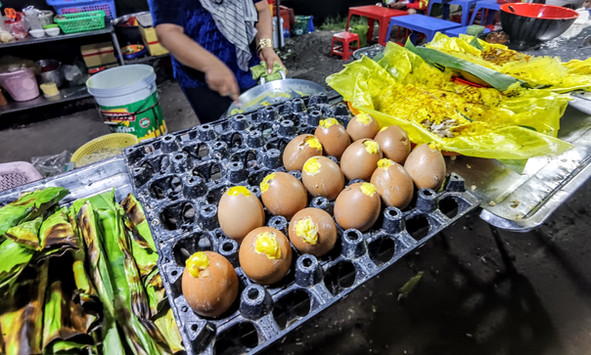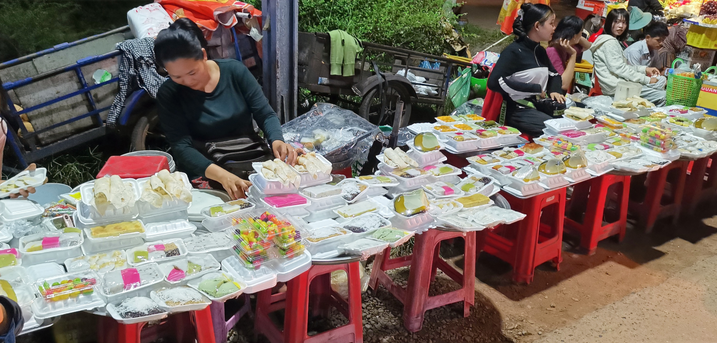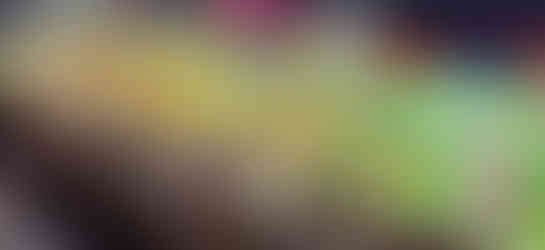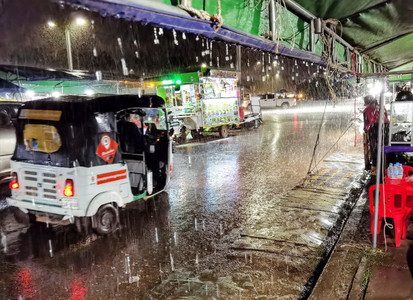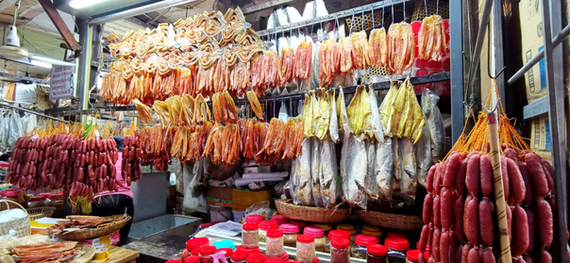Krong Siem Reap: City of Surprises
- MaxiMiserMom
- Sep 22, 2022
- 9 min read
Krong Siem Reap is the largest city in the province of Siem Reap, and the second largest city in Cambodia after Phnom Penh. It has a population of about 250,000, in a province with a total population of just over a million.
Here, you won't find tall, gleaming skyscrapers, but low to mid-rise buildings and well-conserved shophouses which are a legacy from their French colonial past. You'll also not find a sophisticated subway system nor an abundance of passenger cars. Remorks (Cambodian's equivalent of tuk tuks), mini Passapp taxis, motorbikes and bicycles are the common means of transport. A remork is typically a 4-person chariot attached to a motorcycle. The chariot portion doesn't have any brakes, so the rider can only travel at a moderate pace.


Street 60 Night Market
Before visiting Siem Reap, I wasn't sure if the food there would be any good. Would we have to survive on stuffed frogs and deep-fried bugs for dinner, if we couldn't find it in ourselves to swallow a fertilized egg with a semi-formed duck in it?
After watching a string of YouTube videos on street food in Cambodia, I decided that the best way to ease our group of 10 into the food culture there, and not get a rude shock, was to join a guided street food tour. That was actually our very first tour with Bunpheng of Angkor Doors. Our group paid USD140.00 (i.e. USD14.00 per person) for a food tour guided by him, which included hotel pickup and drop off by remorks, as well as food and drinks. The tour lasted close to 3 hours.
We were taken to Street 60. In the day, Street 60 is the main thoroughfare to the official ticket office for Angkor. At night, it is transformed into a bustling market with stalls lining both sides of the road selling everything from pyjamas to critter fritters. It's one of Siem Reap's best kept secrets, and few tourists venture out this way at night.
The first stall which Bunpheng brought us to was an authentic Cambodian roadside eatery, where we sat around a low table on small stools. The name of the eatery and its menu were all in the Khmer language. Without Bunpheng, we would not have been able to make heads or tails out of it, despite the pictures.
The first dish we were introduced to was a crispy rice cake stuffed with sweet corn and scallions that was eaten with a dip. If I remember correctly, the dip was made with palm sugar, coconut and fish sauce. The second item we tried was beef satay eaten with green papaya salad.
The third item we had was the best of the lot. Minced fish and beansprouts were wrapped in a pan-fried crepe made of ground rice flavoured with turmeric. We added cucumbers, lettuce, basil and other greens, poured a sauce over the dish, then mixed the whole thing up before eating it. There was an awesome burst of flavour when we bit into it.
Bunpheng then showed us around the food market. We saw the stalls with mountains of deep-fried silkworm, grasshoppers, crickets and other creepy crawlies and recoiled in disgust. Bunpheng ordered an assortment of critters for us and the lady seasoned it with salt, pepper, garlic and spring onion for us. Errr, thank you very much.
We went on the food tour mentally prepared to swallow some insects and other creatures, but I just couldn't cross the mental hurdle and bite into a whole frog, albeit deepfried to a crisp. I like frog porridge and deepfried frog's legs in Singapore, but it's not the same when you can still see the frog's face, legs dangling there and all. My dad took the courageous step of putting Kermit into his mouth, before the rest of us reached for something less challenging like a silkworm. For the record, that tasted like potato.
Bunpheng then bought some local fruits and dessert for us to try. The coconut dessert was quite nice, similar to nonya kuehs which we can easily find in Singapore.
The last stall we stopped at sold a variety of BBQ food. There was chicken, fish, beef, etc, but of course, the item which Bunpheng highly recommended was their frog sausage! Well, I'm glad he did because it actually tasted really good. Everyone in our group who ate it agreed.
Initially, we were seated at a table with chairs for our BBQ meal, but the rain came pouring down suddenly, and we rushed to take shelter where the locals ate. The locals were used to sitting on mats on the floor to eat. They would also lie in hammocks after their meal.
Street 60 Night Market turned out to be the best night market we went to in Siem Reap. Before our trip, I read about several other night markets like Siem Reap Art Center Night Market, Phalla Angkor Night Market, and the Original Night Market, but they were either closed or reduced to a pitiful state due to COVID-19 when we were there.
Old Market (Psah Chas)
We did visit another market in town which is worthy of mention, and that is Old Market (Psah Chas). Old Market caters to both locals and tourists. It sells cooked food, fresh produce, dry goods and sundries. Tourists hunting for souvenirs will also find plenty of shops selling locally made products.
We enjoyed our walk around the Old Market, and found some lemongrass tea, placemats, clothes, bags and shoes to bring home. Shops and restaurants in Siem Reap transact in USD and Cambodian Riel, at the exchange rate of USD1 = 4,000 Riel. Typically, for change which is less than USD10.00, it would be given to us in Riel.
Directly opposite Old Market was a lovely heritage building which housed a restaurant called Khmer Kitchen. We had dinner there one night, and the food and drinks were excellent and very affordable.
Pub Street Entertainment District
We heard a lot about Pub Street before our trip and knew it was the centre of the action in Siem Reap. COVID-19 affected the businesses there severely, and many were just opening up after months of closure. The place has a lot of potential and I can just imagine how crowded it must have been pre-pandemic.
When Angelina Jolie was filming Tomb Raider, her favourite haunt was The Red Piano at the heart of Pub Street. The bartender there even concocted a Tomb Raider cocktail in her honour. We stopped by one night for drinks. Even though we were very full from eating elsewhere before heading there, we couldn't resist ordering their house pork ribs with sweet marinade (USD8.00) and chicken tenders with camembert and mushroom sauce (USD3.00 for the chicken and USD1.50 for the sauce) to go with our Tomb Raider cocktails (USD2.50) and Angkor beers (USD1.00). My god! Everything was so good and soooo cheap!
Not only were bars and restaurants clustered around the pedestrianized area, there were little carts selling snacks, souvenir shops, massage parlours, fish spa, etc. They were selling freshly made churros dusted with cinnamon sugar for less than USD0.90 per box of 6. Unbeatable!
Tucked away in a little alley off Pub Street, we discovered Gelato Lab. A cozy and authentic Italian gelateria selling creamy gelato in an assortment of flavours for only USD1.50 per cone.
USD0.50 Draft Beers, USD1.00 Chicken Burgers & USD2.00 Cocktails
In general, food and drinks were delicious and extremely affordable in Siem Reap. Ingredients were very fresh, with essentially everything being farm to table.
Within hours of arriving in Siem Reap, we went from being worried about having nothing to eat to being worried about putting on too much weight! We were over-ordering and over-eating at every restaurant. Feasting like kings for a fraction of what we would have paid in Singapore.
Just opposite our hotel was Khmer Taste Restaurant, which has an extensive Asian and Western menu at ridiculously low prices. Draft Angkor beer costs USD0.50, can beer USD0.75, chicken burger USD1.00, cocktails from USD2.00, pineapple fried rice USD2.50...
A few doors away from Khmer Taste was a Kiwi-owned sports bar and bistro with a pool table called Jungle Burger. They have burger deals from USD6.99 which include a fully-loaded burger, fries, draft beer, soft drink or lime juice. I had a refreshing frozen pineapple and lime margarita for only USD2.25. It was really Happy Hour all day, every day in Siem Reap!
Traditional Khmer Massage
Not only were we very well fed in Siem Reap, we were pampered silly too. Our hotel had an in-house spa and I pre-booked their massage services prior to our trip, so we could be brought to nirvana by a pair of healing hands at the end of a tiring day of sightseeing, shopping and feasting.
Traditional Khmer massages have some similarities to Thai massages, but I found Khmer massages more complete and relaxing. They start from the base of your feet, progress to your legs, arms and torso, and end off at your head and face. Thai masseuses tend to crack our backs when we're in a sitting position. Khmer masseuses, on the other hand, crack our backs with us still lying on our bellies.
We saw plenty of massage parlours when we were walking around town, but didn't venture in for a try. Temple Massage at Pub Street was in a convenient location, looked rather inviting, and their prices were quite a bit lower than what our hotel was charging. When we return to Siem Reap, I shall certainly drop by!

In fact, looking at their prices, I might enter and not want to leave...

Wat Thmey (Killing Fields Monastery)
On our last day in Siem Reap, Bunpheng took us to Wat Thmey (Killing Fields Monastery), as he knew I was keen to know more about the founding of modern Cambodia, the truth behind the Cambodian Genocide and the laying of landmines. There's an admission fee of USD3.00 (or 12,000 Cambodian Riel) for the monastery.
After Cambodia regained its independence from French control in 1953, the country underwent a tumultuous period of political upheaval and great instability.
From 1953 to 1970, it was an independent kingdom, with Norodom Sihanouk at the helm for the most part, initially as King, then Prime Minister and subsequently Head of State. During this time, Sihanouk secretly allowed supplies meant for the Viet Cong to pass through eastern Cambodia, resulting in the US bombing eastern Cambodia. US-Cambodia relations became strained.
In 1970, Sihanouk was ousted in a coup and US-backed General Lon Nol assumed power. The Cambodian monarchy was abolished and the country was renamed Khmer Republic. General Lon Nol demanded that the Viet Cong forces leave Cambodia, which had the counter-effect of Viet Cong overrunning large parts of eastern Cambodia and turning over those territories to their Cambodian communist counterparts, the Khmer Rouge. Sihanouk was popular with the Khmer peasants and he backed the Khmer Rouge at that time, so many peasants became supporters of the Khmer Rouge. Between 1970 to 1975, civil war rocked the country, with the Khmer Rouge fighting against General Lon Nol's men.
In 1975, the Khmer Rouge, led by Pol Pot (a pseudonym used by Saloth Sar, which was short for "Political Potential"), took control of the country and renamed it Democratic Kampuchea. Upon their victory, the Khmer Rouge set about immediately to restructure society completely and transform the nation into a commune. Able-bodied males and females were packed off to the countryside to work the land. Anyone who opposed the Khmer Rouge or whom they felt was a threat to them was punished, tortured or eradicated.

In the course of Pol Pot's regime which lasted from 1975 to 1979, as many as close to a quarter of the entire population of Cambodia lost their lives from exhaustion, starvation, disease and execution, in what became known as the Cambodian Genocide. The remains of 50 to 60 of such victims were found in a well at the Killing Fields Monastery.
Eventually, the Khmer Rouge was toppled by Vietnamese forces, who viewed the Khmer Rouge as being hostile to them. Pro-Vietnamese People's Republic of Kampuchea was formed as the new government, and Vietnamese forces occupied the country for 10 years, from 1979 to 1989. During this occupation, a substantial number of landmines was laid. After the withdrawal of Vietnamese forces, landmines continued to be planted as civil war amongst the various political factions continued to ravage the country until in or around 1993. Today, Cambodia has some 40,000 amputees as a result of landmine injuries and millions of mines and other unexploded ordnances lying all over the country.
It's hard to fathom that widespread devastation and destruction befell such a beautiful, peace-loving country just 30 years ago, and that close to a quarter of its entire population was annihilated during Pol Pot's regime less than 45 years ago. Despite the hell they went through, the Cambodians are a cheerful lot with bright eyes and big smiles. I've nothing but admiration for their steely resolve to live against all odds and build a better future.
No one demonstrated this spirit better than the smiling school boy with a broken arm we met by chance outside a souvenir shop at Pub Street. He told us he had injured himself during a soccer game. When he realized we were from Singapore, he surprised us by telling us that he had been to Singapore before. When asked about his future, he surprised us again by saying his dream was to study Information Technology at a university in either Australia or New Zealand. His future is bright. We're sure of that.












